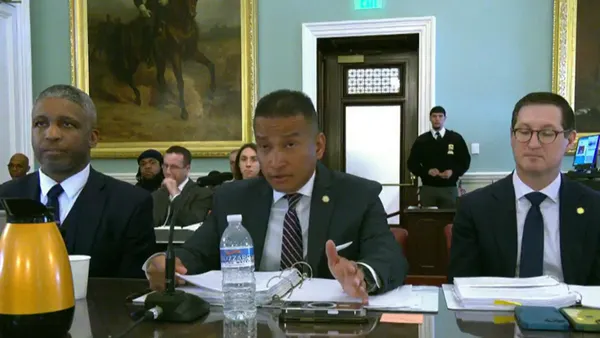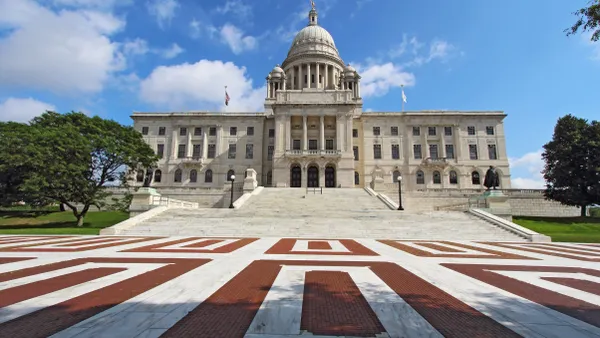Dive Brief:
- The Austin City Council is in the process of negotiating 12-month contracts with Concept, Development and Planning (CD&P) and Texas Zero Waste Strategies to increase city recycling rates, as reported by The Daily Texan.
- Funding would come from Austin Resource Recovery's budget and could not exceed $320,000 during the 2017 fiscal year. The city's current contract with CD&P and Great Communicate LLC, which has been running since 2012, will expire next month.
- The city's diversion rate in 2015 was 42%, short of the 50% goal. The University of Texas at Austin (UT) has its own goal of a 90% diversion rate by 2020 and is currently at 50%.
Dive Insight:
In order to reach "zero waste" by 2040, Austin will need new solutions that go beyond the current program. New commercial organic waste recycling mandates will be one part of this as the city estimates a large portion of waste currently being sent to landfills is recyclable. Officials say that expanding the recycling program to include more materials, such as milk cartons, would also help — but an overall culture shift is what's really needed.
"It’s not just about reaching goals," said Susanne Harm, Austin Resource Recovery senior specialist, as reported by The Daily Texan. "We’re really trying to change the way people think."
Because UT's goal is coming up sooner, the campus will be an interesting model for the city as a whole. Students say they want to encourage more reuse, which makes sense in a setting with a frequent turnover of people that often need the same types of items year after year. Standardizing recycling labels, as Recycle Across America has done with the Rhode Island School of Design, could also be an option.
According to the most recent data, the statewide diversion rate for Texas is around 18.9%. The Texas Commission on Environmental Quality recently commissioned a study to better understand the state's recycling systems and look for ways to increase diversion rates. What happens in Austin will serve as a useful example for the rest of the state in the coming years.















